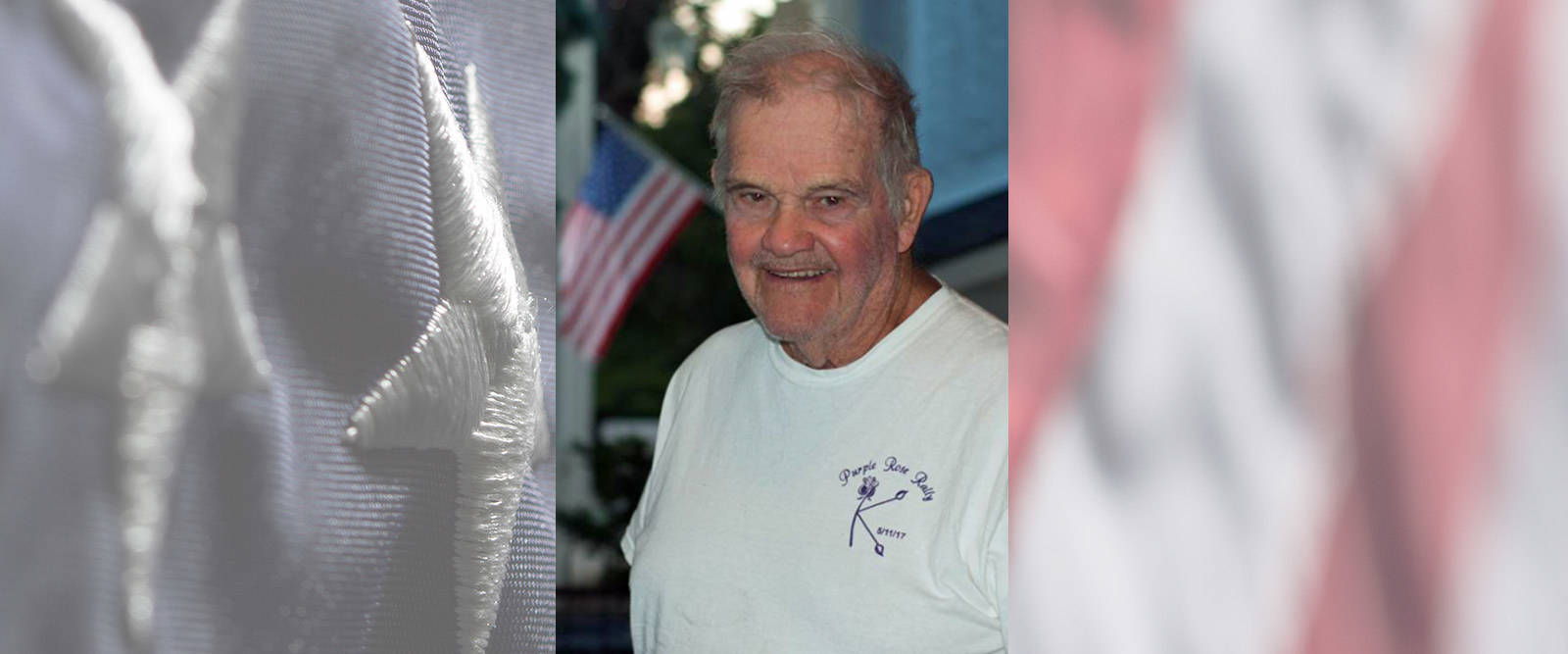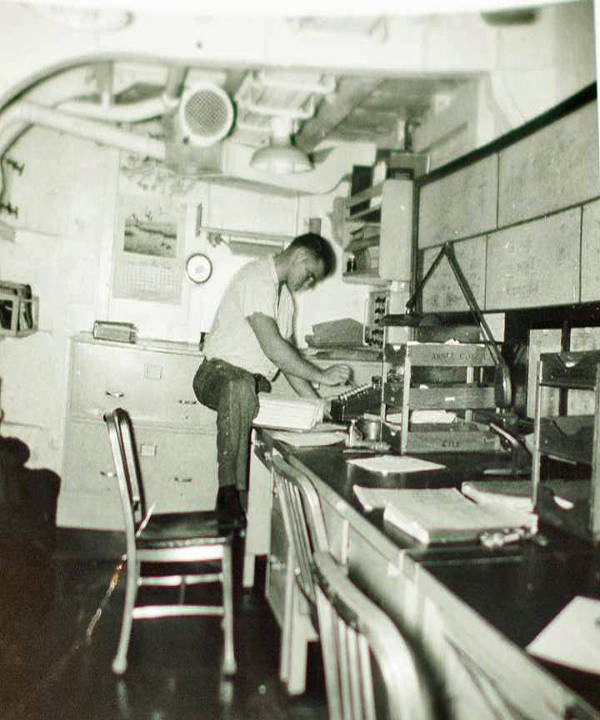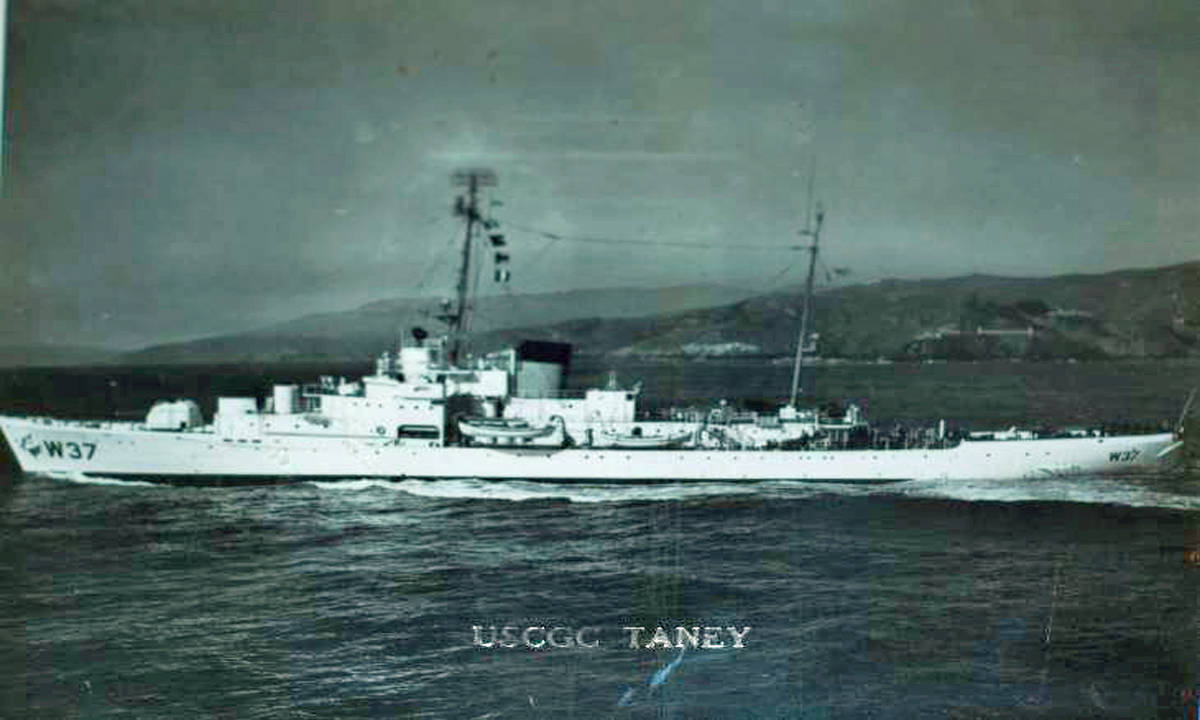U.S. Coast Guard Korean War Chicago, IL Flight date: 09/12/18
By Andrew Dunning, Honor Flight Chicago Veteran Interviews Volunteer
Korean War veteran James “Jim” Bansley served his country in the U.S. Coast Guard, an experience that he says was a major influence on his life, and still fills him with pride.
Jim was born on Chicago’s South Side and later moved with his family to the city’s Beverly neighborhood when he was seven years old. He grew up with two older sisters and two younger brothers. Following graduation from De La Salle Institute, Jim enrolled at St. Mary’s University in Winona, MN, where he studied business. However, he did not finish, deciding to join the military instead. “After two years, I was close to being drafted, anyway,” Jim says. “I wanted to make my own choice.”
Although Jim ended up in the Coast Guard, it wasn’t his first choice, he says. “I really wanted to join the U.S. Air Force because I wanted to fly jets.” Jim persuaded his friend, Bill, to go with him to Chanute Air Force Base near Rantoul, IL, for a flight physical. Bill did not want to enlist, but accompanied his friend for moral support. Both men passed the athletic portion of the exam, but Jim ran into a problem. “I learned a new word that day- depth perception,” he says. “They told me I didn’t have it.” Jim persisted, still hoping to be part of the flight crew, but the recruiter held firm. “He said you’ve got to be able to tell if you’re coming or going to join the flight crew.”
To add insult to injury, he says, the Air Force wanted Bill, who enlisted despite his earlier objection. Bill served 25 years and retired as a lieutenant colonel. Still fascinated with aviation, Jim decided to enlist as a paratrooper. “If I couldn’t fly planes, I figured I could jump out of them.” He convinced another friend to enlist with him, and they made plans to visit the Army recruiter. But they never made it. On their way to the recruiting office, he says they passed a U.S. Coast Guard Recruiting Office. “There was a sign that read ‘join now, no wait list.’ That sounded pretty good.”
The recruiter told him he could choose his duty station, so he thought he’d come back to Chicago’s Coast Guard Station Jackson Park, where he could be close to his girlfriend, Barbara. Jim signed his enlistment papers and reported to Coast Guard Training Center Cape May, NJ, on Sept. 2, 1952.
He completed the 13-week training program, learning military doctrine and procedures, knot tying and vessel operations. The hardest part of Boot Camp was rowing longboats through the rough surf, he says. “The surf out there was three to four feet high. After an hour or so, you felt muscles you didn’t realize you had.” Boot Camp ended in early December, and he returned home for a two-week leave. During this trip, Jim and Barbara became engaged, but they would not spend Christmas together, he says. Jim didn’t receive his preferred duty station, but was sent to report for duty at Coast Guard Station Monterey, CA.
Jim, the 21-year-old rescue swimmer soon learned an appreciation for the power of the ocean. One Sunday morning, a lifeboat crew needed a volunteer to replace a sick guardsman. Jim thought it would be an “easy assignment” and that they’d be home that evening, so he stepped forward. The ocean was calm when the patrol embarked, but the wind picked up and the waters turned rough. By evening, the swells were frighteningly high, he says. “I thought Columbus was full of it. The world was flat, and we just fell off of it!”
The crew received orders to assist a fishing boat caught in a storm some 50 nautical miles off the Pacific coast. Several hours later, the crew located the distressed boat and prepared for the dangerous boarding, as Jim worked the spotlight. The boatswain’s mate made three failed attempts to harpoon a rescue line into the fishing boat. The commanding officer told Jim he would need to swim the line over to the boat. But the boatswain’s mate insisted on one more try, and “shot it right through the porthole.” The crew rescued the fisherman and his wife, who they found violently ill below deck. As the sun began to rise, the seas calmed, and the 36-hour ordeal was over. “I never thought an ocean could be so vicious and then turn so beautiful,” Jim says.
In July 1953, the Coast Guard sent Jim to Honolulu, HI, to join the crew of the USCGC Taney (WHEC-37), a treasury-class high endurance cutter headed to Korea. The ship had previously clashed with Japanese aircraft during the attack on Pearl Harbor on Dec. 7, 1941, and during WWII the Taney served in both the Pacific and Atlantic Theaters (“USCGC Taney” accessed Aug. 22, 2018 https://www.historicships.org/taney.html). The Taney is the only ship to survive the attack on Pearl Harbor that is still afloat. It now serves as a museum docked in Baltimore’s Inner Harbor and is designated a National Historic Landmark. “She was a good, seagoing ship,” Jim says. “And the crew was great. We were a close-knit bunch.”
When the ship reached the Korean Peninsula, the war had largely ground to stalemate and major hostilities had ended. Yet, the crew still had a dangerous task. “Because the boat’s ‘draft’ (the distance from the waterline to the bottom of the hull) was only eight feet, we could go into shallow water,” Jim says. “We’d pull in to shoreline to draw enemy fire from the beach, then radio back our position to the big boys – the aircraft carriers and destroyers with the big guns. Then we got the hell out of there before our guys fired on them.”
Following the signing of the Korean War Armistice on July 27, 1953, the Taney conducted air safety patrols for both military and civilian aircraft as well as participated in air/sea rescues. Patrolling a 100-square-mile “ocean station,” the Taney would communicate with flight crews, verifying their positions and checking their mechanical conditions, Jim says. Occasionally, airplanes needed to make emergency water landings, and Taney crew members would pull the passengers and crew from the water.
Jim and Barbara were wed in September of 1954, and lived in an apartment in Oahu until his discharge in September, 1956 at the rank of petty officer, second class. They returned to Chicago where he worked at an accounting firm until he joined his father-in-law’s plumbing company. Eventually, he obtained a plumbing license and took a job with Chicago Public Schools. The couple raised five sons and seven daughters in their Beverly home. Sadly, Barbara passed away in 2009, after 55 years of marriage. Today, Jim enjoys spending time with his 52 grandchildren and 33 great-grandchildren.
Jim, we thank you for your service to our country. Enjoy your well-deserved Honor Flight with your fellow veterans!





